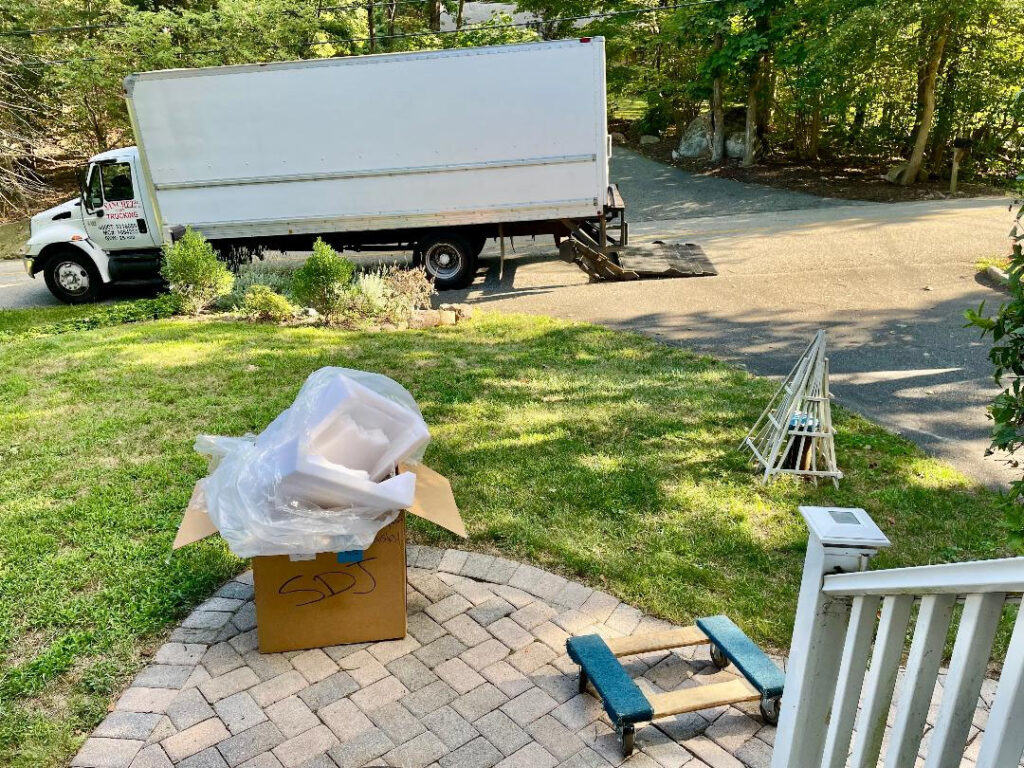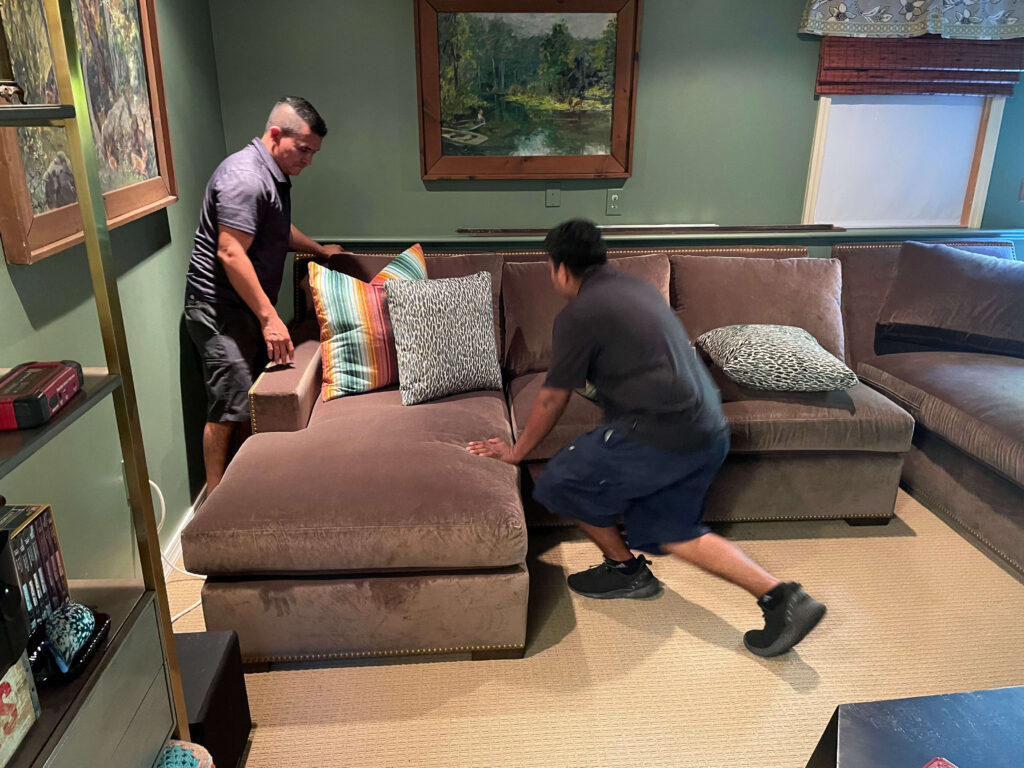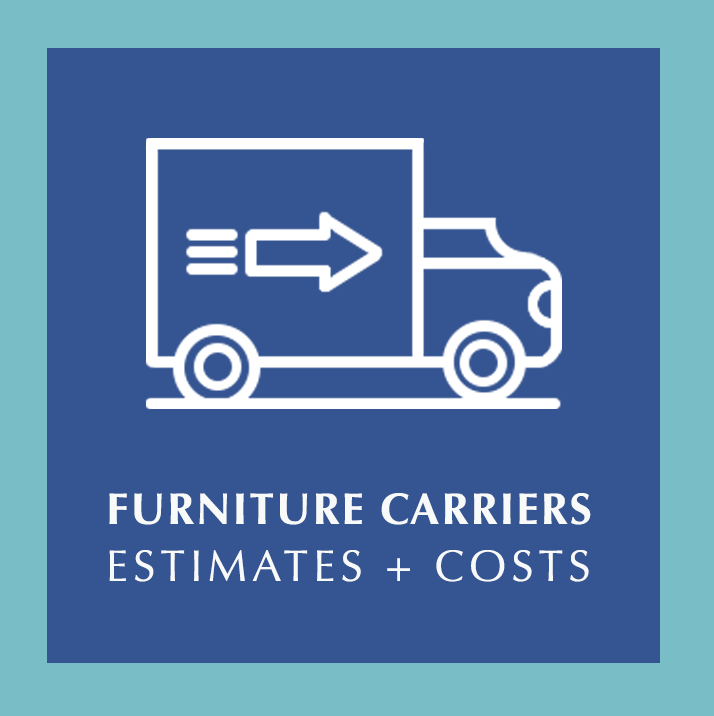How to Conquer Your Fear of Freight & Delivery
For many new interior designers, the most intimidating part of buying furniture directly from the manufacturer can be summarized in one word: freight. From calculating shipping charges to choosing a freight company and local receiver, to understanding exactly how the whole process works, furniture delivery can be complicated.
In fact, more than one interior designer has opted to lose out on the substantial profits that come with this type of purchasing because the shipping component seemed so overwhelming. And that’s a shame because once you get the hang of it, dealing with freight isn’t really that hard.
Here’s how it works:
First, you will need to find two different kinds of providers: a (long-distance) freight company and a (local) receiver.
The freight company’s job is to pick up your furniture from the vendor’s warehouse and transport it to your local receiver, also known as a “receiving warehouse.” The receiver’s job is to inspect the item for damage when it arrives and then contact you to set up delivery of that piece to your client. (Most receivers will also store goods at their warehouse if, for example, you prefer to wait for multiple shipments to arrive before having everything delivered to your client all at once.)

That is the traditional approach to shipping and delivery. The only alternative is to hire an all-in-one “white glove” service that will do it everything — pick up the furniture from the vendor and deliver it directly to your client. However, I’ve heard many more horror stories involving white glove companies than I’ve heard about the traditional freight + delivery approach. And I have concluded that white glove doesn’t really save you money in the end. Thus, my recommendation is to stick with the tried and true.
Now, when it comes to choosing a freight company, you can take one of two approaches:
Some interior designers like to have a preferred shipper that they use for most projects. This keeps things simple — particularly with billing. And while not every company will allow a designer to set up an account, those who do will keep your credit card on file so they can use it without waiting for and/or bothering you.
However, it’s important to know that most freight companies have limited services areas. For instance, Shelba Johnson could be a good preferred shipper for an interior designer who works in the Northeastern United States. But there are some areas they don’t service, such as Utah. So when choosing a preferred shipper, you would want to make sure that they offer coverage in all of the areas you work.

The second approach to choosing a freight company is to use the preferred carrier of the manufacturer from whom you’re purchasing. This frees you from the trouble of finding your own shipper, and it offers some added benefits if a piece of furniture is damaged en route to its destination. Chances are the vendor and the freight company already have an agreement in place relating to damage, which means there will be less finger pointing and more cooperation in resolving any issues.
As for the cost of freight, it can vary widely, and depends on a number of variables: the weight and cubic dimensions of the item being shipped, quantity, and the distance that the item must travel. Shippers also typically have minimum charges. For these reasons, the best method to use for estimating your freight charge is percentage of the cost of the order.

The Designers Collaborative can help with this, as we offer charts and tools that enable our members to determine what percentage they can expect to pay for freight from each of our many vendors.
Now, on to the receiver:
Finding a local receiving warehouse that will inspect and deliver furniture to your client is less complicated because once you have a good one in place, you shouldn’t ever need a different one. This is another area where you can benefit from membership in The Designers Collaborative since we maintain a valuable list of local delivery companies across the US and Canada with whom our designers have had positive experiences. We do sell these custom tools on our Shop Page for you to purchase if for whatever reason you aren’t ready to be a Member of The Designers Collaborative yet.

When it comes to the cost of receiving and delivery, the final bill may surprise you. But do understand that the price of a good receiver is worth every penny. In addition to providing white glove delivery to your client, your receiver will also identify any damage on an item when it first arrives at their warehouse — which means they will save everyone time and money (and maintain the client’s goodwill) by refusing to deliver something that isn’t right. Many receivers also have repair people on hand who can fix small issues and perform touch-ups, and that can be a lifesaver.
As for pricing, many of these companies can send you a rate sheet, or they will provide estimates per job. Generally speaking, receivers price by the type of item to be delivered and the distance to be traveled between their warehouse and the destination. (Keep in mind that your receiver will most likely be located at least an hour away from you. However, since they take care of all inspection and delivery, you will almost never ever need to go to their warehouse.)

And that’s how it all works. Not too scary, right?
So now that you understand the nitty-gritty, please don’t let the fear of freight and delivery prevent you from making as much profit as possible. As in most areas of life, the best way to learn is by doing. But you don’t have to go it alone!
The Designers Collaborative is here to help our members navigate every aspect of purchasing, and to provide the tools and education you need to experience maximum success. You can do this, and we can help, Join today!








